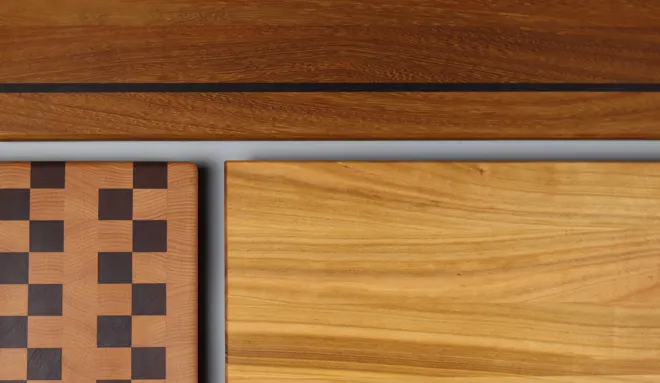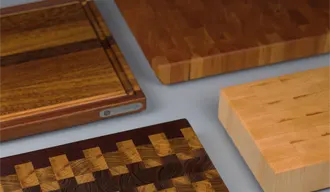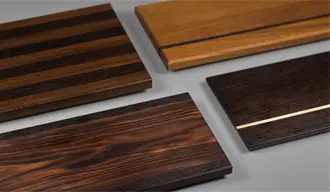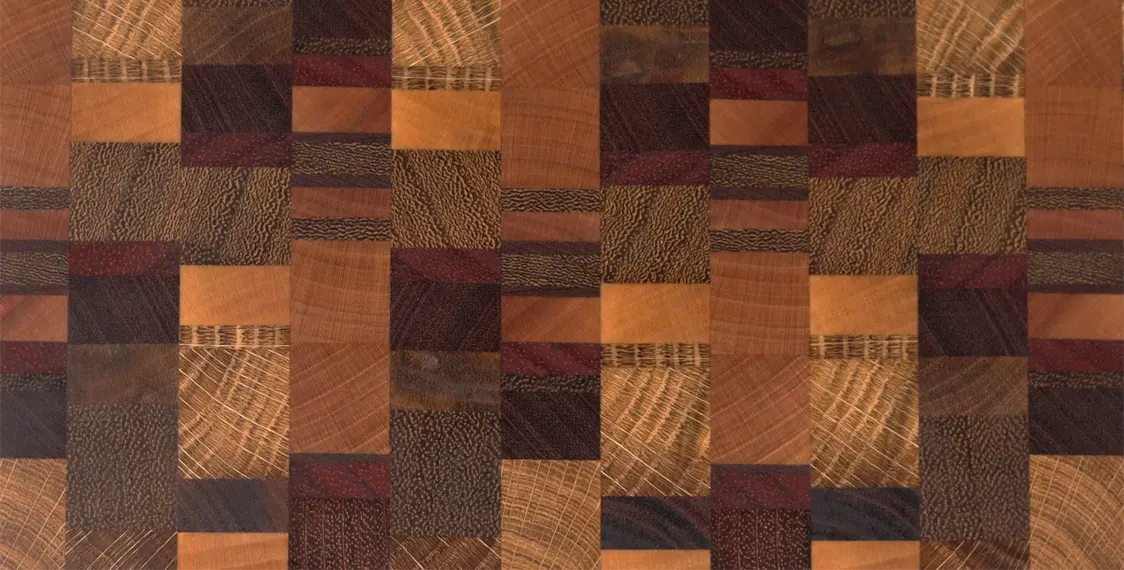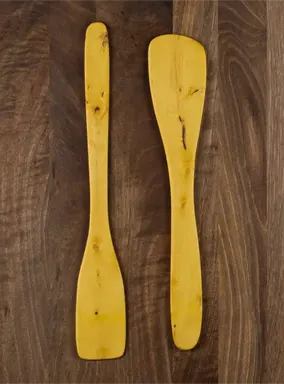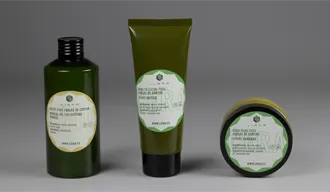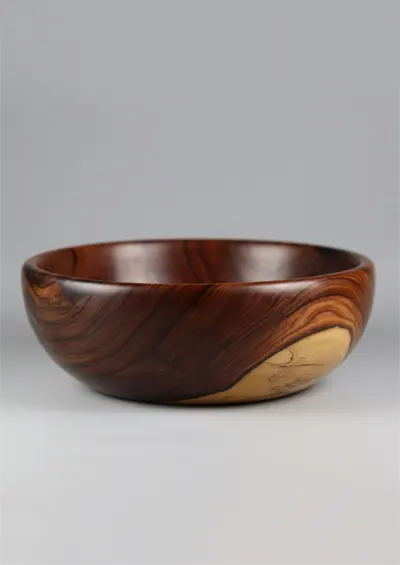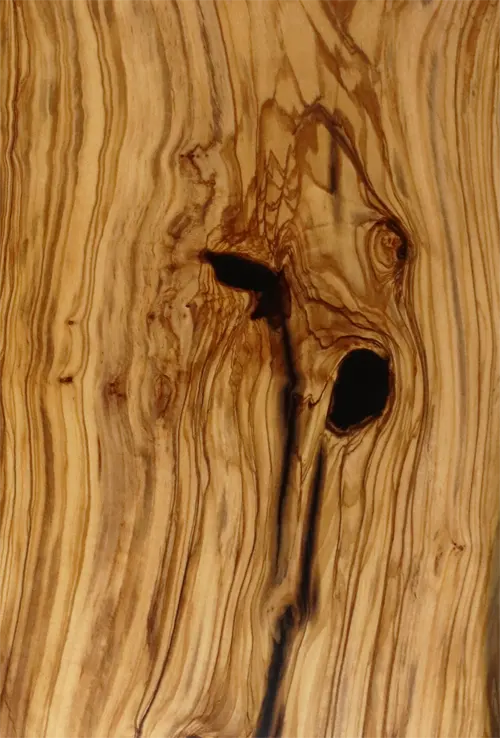Wenge Wood: Uses and Characteristics
Wenge wood is recognized for its strength and exoticism, which makes it a highly valued option for both decorative and functional applications.
Originating from Africa, this wood stands out for its density, durability and distinctive dark color.
In this article, we will explore in depth the characteristics of wenge wood, its physical properties and its main uses in various applications, including its popularity in the manufacture of cutting boards.
What is Wenge Wood?
Wenge wood is a tropical wood that comes from the Millettia laurentii tree, native to the tropical regions of Central and West Africa.
Known for its dark tone ranging from chocolate brown to almost black, and its straight or slightly interlocked grain, wenge wood is prized for both its aesthetic appearance and technical performance.
This type of wood is particularly popular in applications where durability and distinctive aesthetics are required and is the most affordable black wood on the market, often used as an inexpensive alternative to ebony.
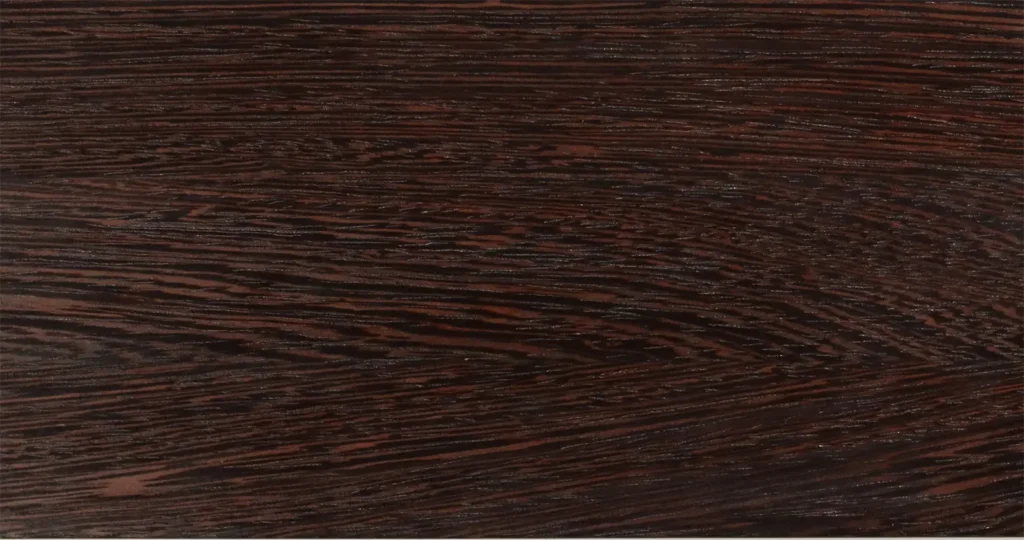
Wenge Wood Properties
Hardness and strength
Wenge is one of the densest and hardest commercially available woods, with a density of approximately 880-910 kg/m³. This high density gives it exceptional resistance to wear, impact and adverse weather conditions.
Natural durability
Wenge wood is naturally resistant to insect attack and rot, making it an ideal choice for both interiors and exteriors. This durability is key in its use in spaces with high humidity, such as bathrooms and kitchens.
Dimensional stability
Despite changes in temperature and humidity, wenge maintains its shape in a stable manner, reducing the possibility of the wood warping or cracking over time. As a result, it can be used to make thin trays and serving boards without danger of warping.
Technical characteristics of Wenge wood
| Feature | Value |
|---|---|
| Scientific name | Millettia laurentii |
| Origin | Central and West Africa (Cameroon, Gabon, Congo, Mozambique) |
| Density (12% humidity) | 870–910 kg/m³ |
| Janka hardness | 1,930 lbf (8,600 N) |
| Colour | Dark brown to purplish black with fine veins |
| Grain / Fiber | Medium to coarse grain; straight or slightly interlocked grain |
| Natural durability | High resistance to fungi and insects |
| Dimensional stability | Good; volumetric shrinkage coefficient: 0.69% |
| Impregnability | Sapwood: moderately impregnable; heartwood: not impregnable |
| Drying process | Slow; risk of cracks and deformations |
| Workability | Difficult; requires sharp tools and pre-drills |
| Main uses | Luxury furniture, flooring, musical instruments, interior and exterior carpentry |
Visual aesthetics
Wenge wood is highly sought after due to its dark and elegant appearance with subtle grains that become more pronounced after polishing and treatment with oils. Its exotic hue adds a sophisticated touch to any project.
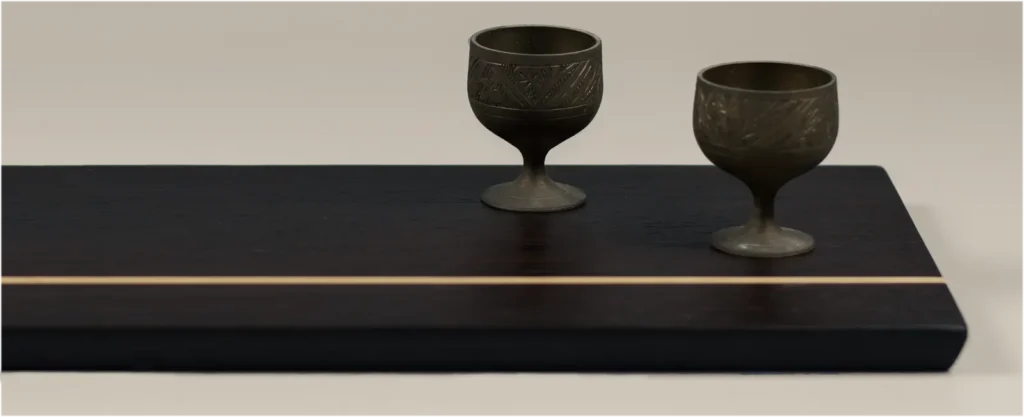
Uses of Wenge Wood in Cutting Boards
Wenge wood is often used in the manufacture of luxury design cutting boards because of its unique combination of durability, moisture resistance and beauty. Rarely are boards made entirely of Wenge. Some of its specific benefits are highlighted below:
Resistance to deep cuts
Their high density ensures that cutting boards made of wenge withstand repeated cuts without suffering major structural damage. This makes them an ideal choice for kitchens where a durable cutting board is required. Conversely, this can severely damage knife edges, so their use should be limited to details or presentation boards to avoid such damage.
Natural antibacterial properties
The low porosity of wenge limits the absorption of liquids and the accumulation of bacteria, helping to maintain a hygienic kitchen environment.
Aesthetics in the kitchen
The dark, elegant color of wenge adds a distinctive touch to modern kitchens. A wenge cutting board is not only functional, but also a decorative accessory that adds a touch of sophistication to any home.
We use Wengue mainly to make service boards, such as our Nigra board.
Advantages and Considerations for Wenge Wood
Advantages of Wenge wood:
- Long durability: Wenge is an extremely resistant and durable wood, ideal for products that must withstand intensive use.
- Low maintenance: Although it requires some maintenance such as the periodic application of oils to preserve its appearance, its natural resistance means that it needs less care compared to other softer woods.
- Weather resistance: Its ability to withstand climatic changes makes it suitable for exteriors, where exposure to humidity and weathering is frequent.
Considerations:
- High price: Wenge wood tends to be considerably more expensive than other woods, due to its rarity and exceptional durability and aesthetic characteristics. Because its international trade is regulated and its use is not widespread, its availability is low.
- Difficulty of work: Because of its hardness, working with wenge can be a challenge, especially in carpentry projects that require specialized tools. In addition, wenge sawdust is harmful to health, so stringent safety measures must be taken when working with it. However, the effort is rewarded by the beauty and strength of the final product.
Conclusions
In short, wenge wood is a premium choice for those seeking a combination of exotic aesthetics, durability and functionality. Whether for cutting boards, high-end furniture or cladding, wenge guarantees a visually stunning result that will stand the test of time.
Our products with Wenge wood
-
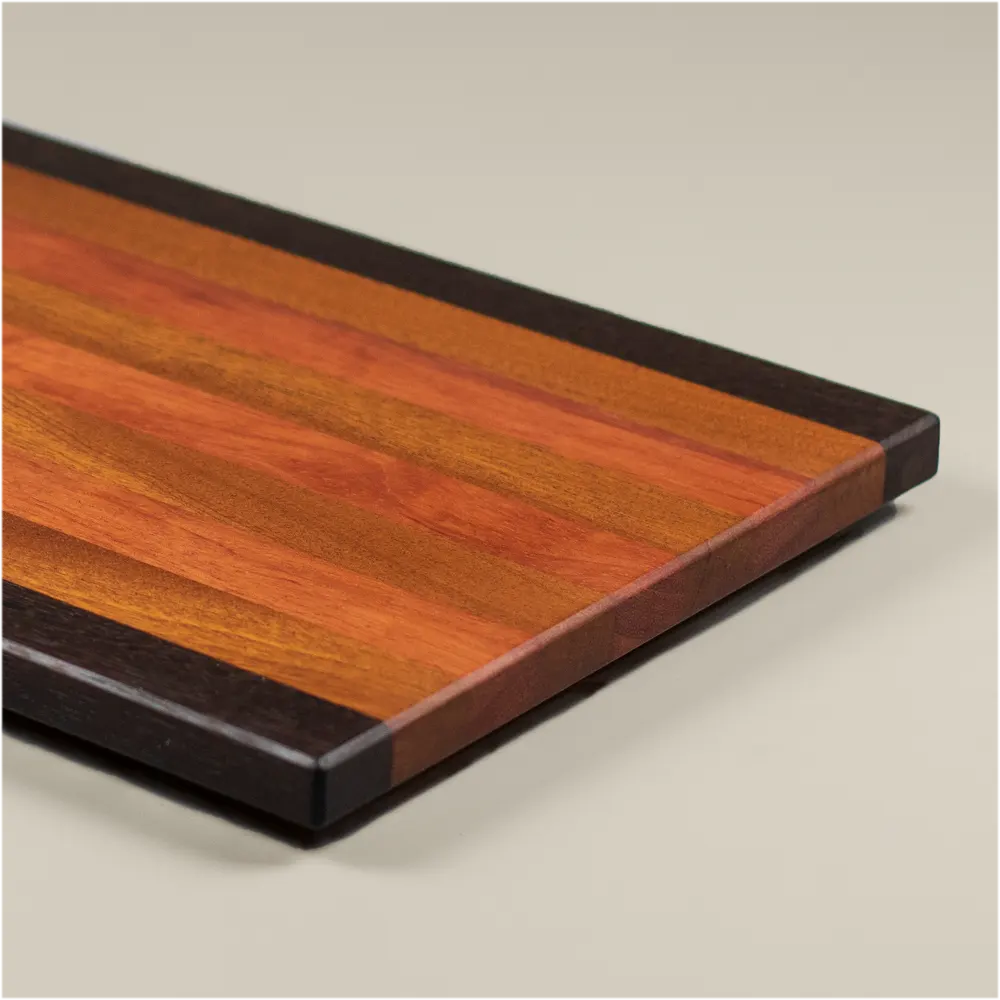 SplendidaPrice range: € 160,00 through € 180,00
SplendidaPrice range: € 160,00 through € 180,00 -
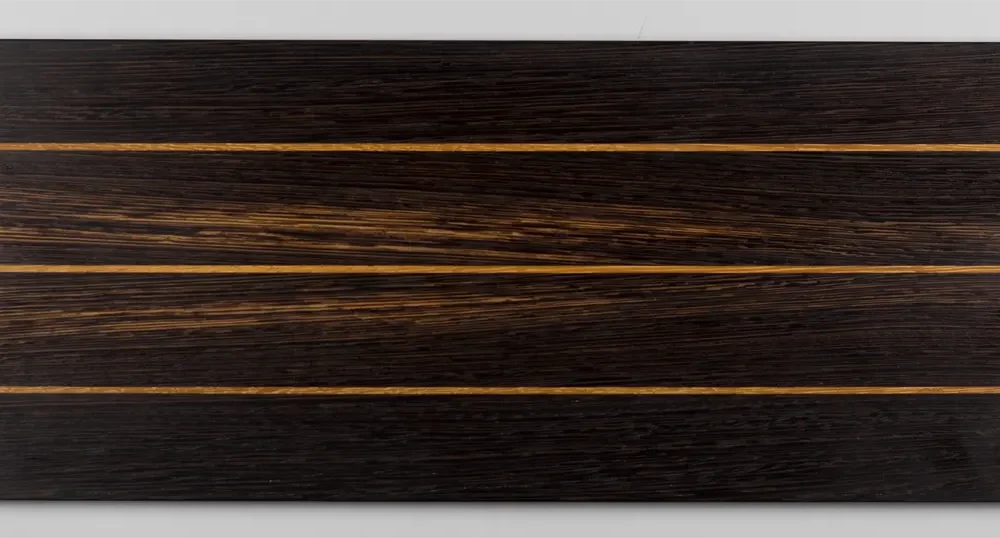 Wengue Special€ 110,00
Wengue Special€ 110,00 -
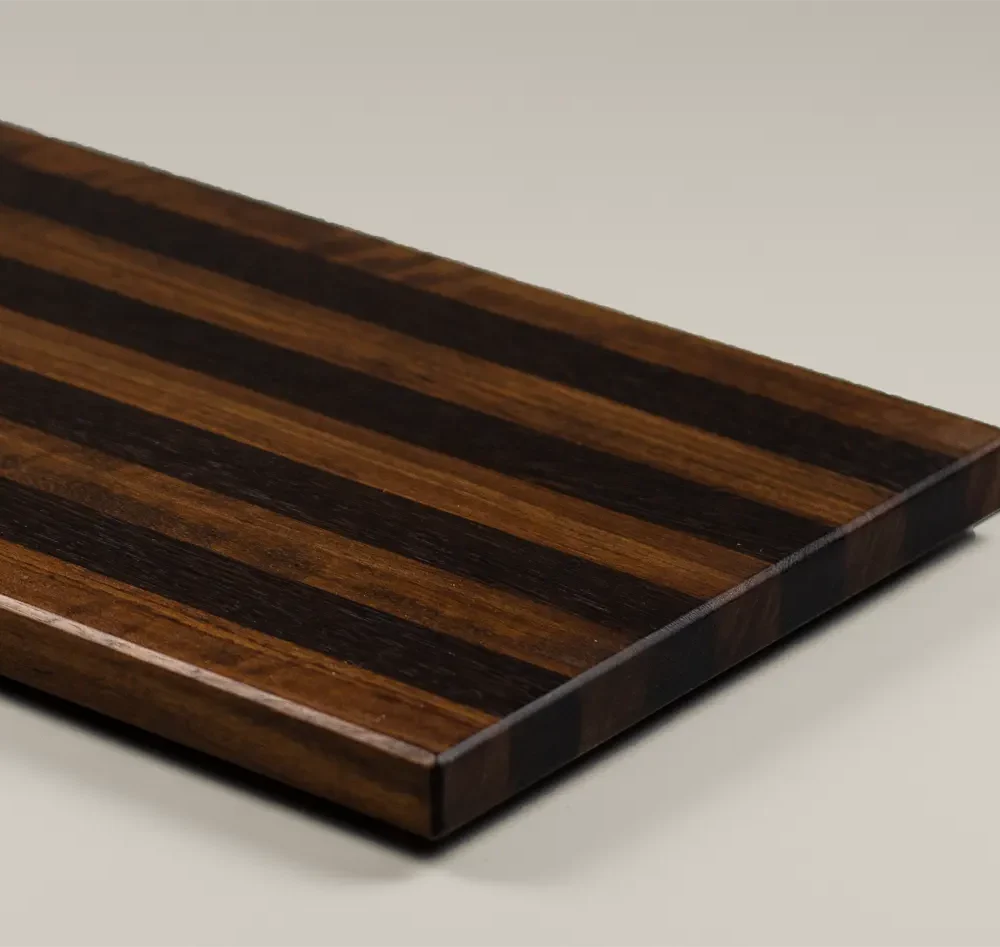 UMBRA
UMBRAserving board
Price range: € 160,00 through € 180,00 -
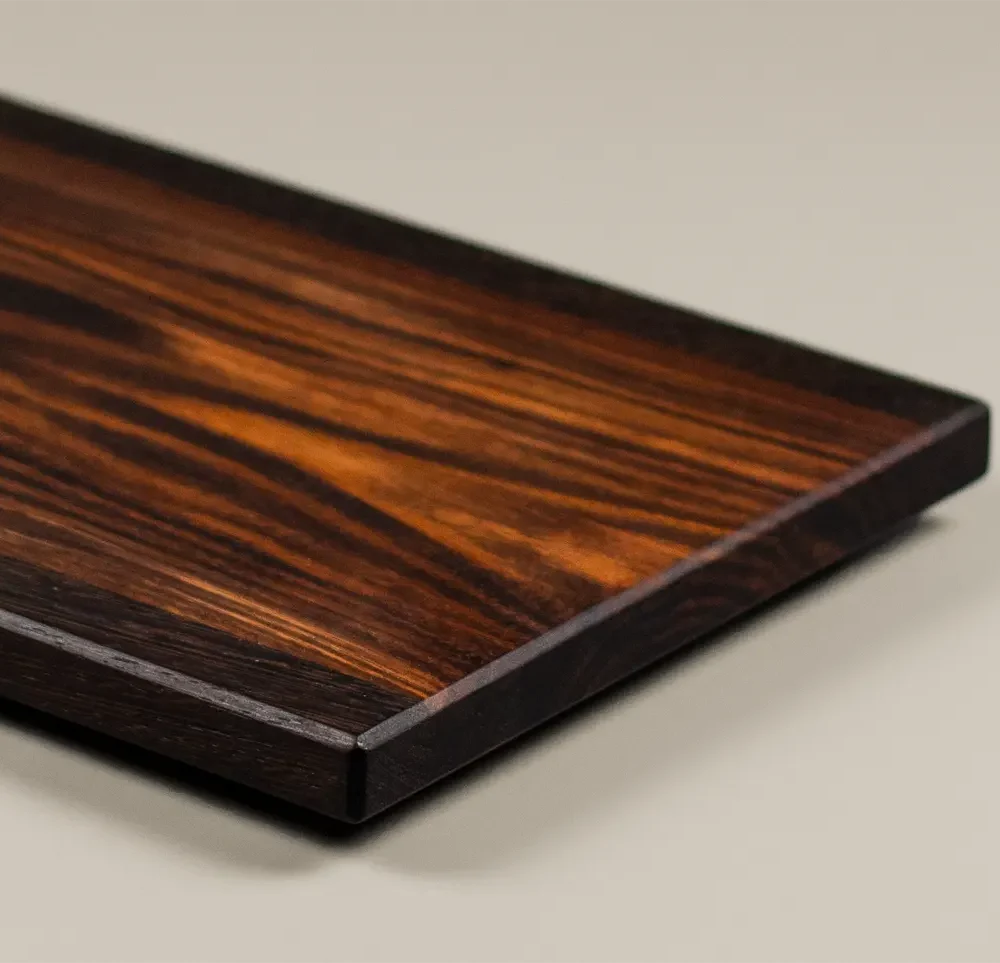 NUBILA
NUBILAwooden cheese board
Price range: € 85,00 through € 105,00
FAQ: Frequently Asked Questions about Wenge Wood
What is wenge wood and where does it come from?
Wenge wood comes from the Millettia laurentii tree, native to Central and West Africa. It’s known for its dark color and high density, making it highly prized in carpentry and interior design.
What are the main characteristics of wenge wood?
It stands out for its hardness, durability, and wear resistance. Its dark brown to purplish-black color and distinctive grain make it ideal for both aesthetic and functional applications.
What is wenge wood commonly used for?
It is used in the manufacture of high-end furniture, flooring, musical instruments, interior and exterior carpentry, and decorative elements due to its durability and elegant appearance.
Is wenge wood suitable for outdoors?
Yes, thanks to its high resistance to moisture and insect and fungal attacks, it is suitable for outdoor applications, provided it is properly treated.
How does wenge wood behave in the face of humidity?
It has excellent dimensional stability, which means it withstands changes in humidity and temperature well, minimizing the risk of deformation.
Is wenge wood easy to work with?
Due to its hardness and density, it can be difficult to work. It is recommended to use sharp tools and pre-drill holes to prevent cracking.
What care does wenge wood require?
It is advisable to apply protective oils or varnishes to maintain its appearance and protect it from moisture and wear. It is also important to avoid prolonged exposure to extreme conditions.
How does sunlight affect wenge wood?
Prolonged exposure to sunlight may slightly lighten the color. To maintain its original tone, it is recommended to apply finishes with UV protection.
Is wenge wood an alternative to ebony?
Yes, due to its dark color and similar characteristics, wenge is considered a more affordable alternative to ebony in various applications.
What is the price of wenge wood?
Price varies depending on quality, treatment, and origin. It’s generally more expensive than other common woods due to its density and exceptional properties.
Otras entradas del blog
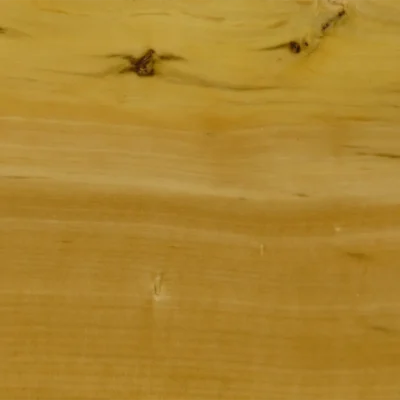
Boxwood: Uses and Characteristics
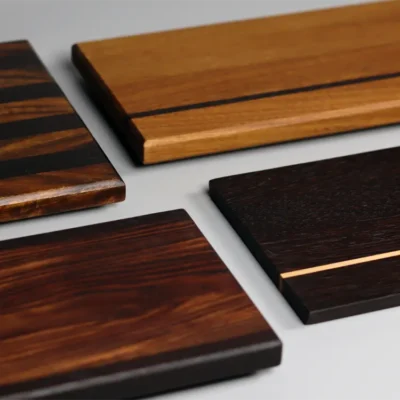
What is the best wood for cookware?
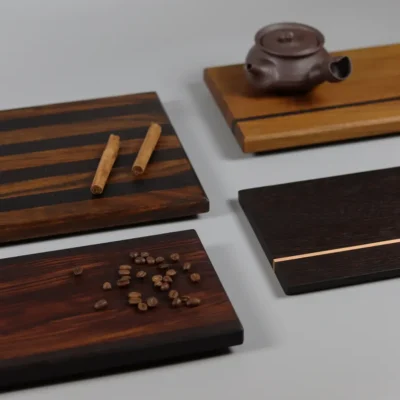
Restaurant serving boards: a complete guide
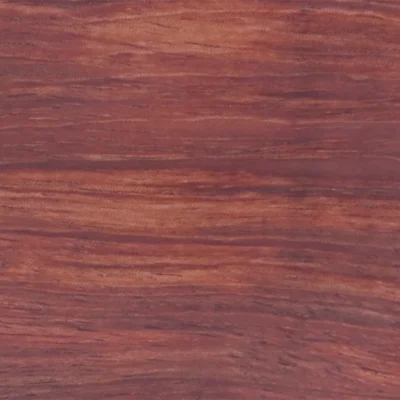
Bubinga Wood: Uses and Characteristics
Nuestras tablas de cortar:
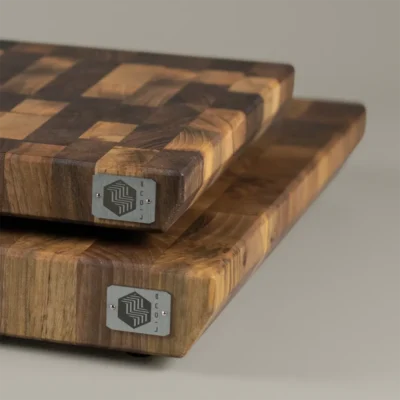
Pura
Walnut walnut butcher block
Pura
Walnutwalnut butcher block

Pura
Walnut walnut butcher block
Pura
Walnutwalnut butcher block
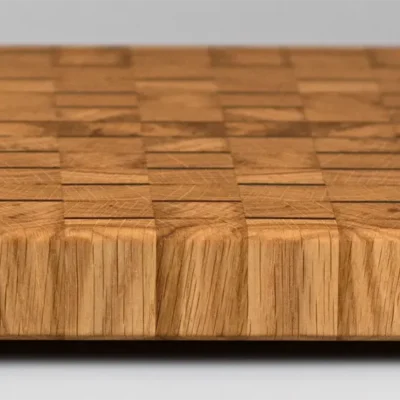
Summer endgrain Cutting Board
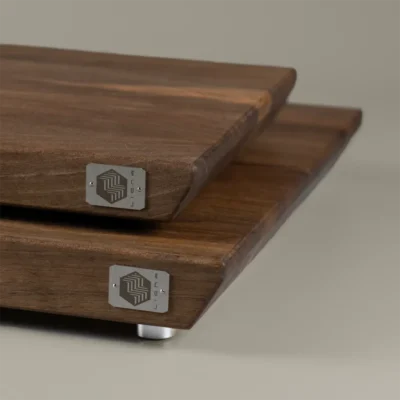
Linea
Walnut Walnut cutting board
Linea
WalnutWalnut cutting board
